18.
THE EARLY INHABITANTS OF WESTERN ASIA1
ByFELIXn/aVON LUSCHANn/an/an/an/a
Standing on the "New Bridge" in Constantinople, near the Mosque of the Sultan Validé, I have more than once tried to count the languages and dialects spoken by the crowds pressing and pushing between Galata and Stamboul. Turkish and Greek are naturally the most frequently spoken, but one also easily distinguishes much Armenian, Arabic, Kurdish, and Persian. We hear the harsh voices of some Circassian soldiers, and learn from an Abkhasian friend that he does not understand their language and that "it might be" Lesghian. He also tells us that many of his Circassian friends serving in the same regiment are obliged to speak Turkish when they want to understand one another.
We then meet Albanians, Bulgarians, Roumanians, and are addressed in Serbo-Croatian by an old priest from Bosnia. You are sure to hear in less than five minutes five other modern European languages, English, French, German, Italian, and Russian, and then your ear is delighted by the melodious Spanish of some Spaniole Jews from Salonika, who still retain the idiom spoken in Spain when they were expelled from there more than 400 years ago, and have thus actually preserved the language spoken by Cervantes. And we hear other Jews on their pilgrimage from Russia and Poland to Jerusalem, speaking their curious Yiddish, a sort of German that no German could understand without making it a special study. Once on this bridge, I had to play the interpreter between a Hungarian Gypsy and some Aptals or other Gypsies from Anatolia, and an instant later I saw a Dinka eunuch sitting on the motor car of an imperial princess and making his selam to a group of equally dark and equally tall Bari or Shilluk. . . .
Another day, on the same bridge, I met some East Indians, speaking, as they told me, Hindi, Hindustani, and Gujerati, and trying in vain to come to an understanding with a large troup of African hajjis returning from Mecca, some of whom were Hausa, others from Zanzibar and the Swahîli coast, others from Wadai and Baghirmi. One may also meet on this bridge Mohammedans from China and from Indonesia, and, to complete this Babylonian confusion of languages, some day or other
even a Papuan from Doreh or some other place in Dutch New Guinea may appear there on his hajj to Mecca.
Not less numerous than the languages are the types one meets in Constantinople or in any other of the larger towns in western Asia, and even within a linguistic group there is generally a most striking diversity of somatic qualities. There are Turks with fair and Turks with dark skin; Greeks with short and Greeks with long heads; Arabs with broad and low noses; and other Arabs with narrow and high noses; Kurds with blue and Kurds with black eyes; and the more one studies the ethnography of the Ottoman Empire the more one sees that "Turks" in reality means nothing else than Mohammedan subjects of the Padishah, that "Greeks" means people belonging to the Orthodox church, and that "Arabs" are people speaking Arabic—the somatic difference between a Bedouin from Arabia or Mesopotamia and an "Arab" farmer from near Beyrout is striking, and they have nothing in common except their language.
Also the study of the modern religions in western Asia is of no help to us in this labyrinth of types. There are Greeks who look like Mohammedans, and many Ansarîyeh or other ("Moslem") sectaries are not to be distinguished from Armenians. Religion, too, is here much more closely connected with late historical events than with races or nations, and is only too often of a merely accidental character.
Even the old historians do not help us. Their anthropological interests were generally trifling, and important statements like the note that the Armenians " "2 or that a tribe from the Soly-mian Mountains spoke Phoenician, are extremely rare in the old writers, who give us names like Lycians, Carians, Cilicians, Paphlagonians, Cappa-docians, Lydians, and so on, but, generally, do not give us the slightest details as to their place in an anthropological system.
"2 or that a tribe from the Soly-mian Mountains spoke Phoenician, are extremely rare in the old writers, who give us names like Lycians, Carians, Cilicians, Paphlagonians, Cappa-docians, Lydians, and so on, but, generally, do not give us the slightest details as to their place in an anthropological system.
So we can well understand how, 50 years ago, G. Rosen, then perhaps the best authority on the nations of Asia Minor and Syria, could say that the anthropology of Western Asia would "always remain a mystery."
Since then minute anthropometric researches and vast excavations have both thrown light on most of the problems connected with this "mystery," so that it may now be considered as practically solved.
My own way of proceeding was to eliminate one by one every national or racial element that could be traced as having come from outside, and then to study the remainder. It was my good fortune to begin archaeological and anthropometric field work in Lycia as early as 1881, and since that time I have never ceased to collect all available data connected with the natural history of man in western Asia. So it is the work of 30 years of which I shall now try to give a short account, and this will be done best by beginning with the ostensible foreign elements and then describing the remaining tribes and groups.
A. DARK AFRICANS
These are naturally by far the easiest to eliminate, and they have only in a very insignificant way contributed to the building up of the white communities in Asia Minor and in Syria, although they have been imported there from the earliest historical times down to our own days. Even now there are few houses of wealthy Mohammedans without dark servants, male or female, and without half-caste children of the most various tints. Nowhere, perhaps, with the exception only of Brazil, could miscegenation be better studied than in the large towns of the Levant. Domestic slavery is still flourishing there, and "black ivory" generally comes, as in the old times, from the Upper Nile, but also from Bornu. In the Turkish-speaking south of Asia Minor a dark African is generally called "Arab," in Syria, "Maghrebi" or "Habeshi." As far as I know, social inferiority is never connected with color; half-castes frequently intermarry with whites, but still there is no real negro permeation of the other natives, probably because that section of the offspring which reverts to negro qualities does not stand the climate.
B. CIRCASSIANS
About a million of the Mohammedan inhabitants of the Caucasus immigrated into Asia Minor and Syria after the fall of Shamyl. The lot of these muhajir (refugees) was generally a melancholy one; the Ottoman Government did its best to give them land, but land without a master is rare also in Turkey, and in many places the result was a fight of all against all or a state or regular brigandage, often resulting in the final extinction of the Circassians. Where the land given to them was really masterless, it lay in unhealthy swamps and marshes, where malaria raged and carried them off at a terrible rate year by year. I know a place near Islahiyeh where more than 1,000 Circassian families were settled about 1880; now only 7 of them remain, and these in a wretched state of fever and disease. Only a very few of these Circassian colonies are really thriving, and probably most of these glorious sons of snowy mountains will in a few generations have paid with their lives for their fidelity to Islam.
Till now the Circassian blood has not seriously influenced that of their Turkish neighbors and probably never will. The colonists very seldom give their daughters to Turks or Arabs, and the "soft Circassian beauties" play a larger part in fiction than in actuality.
F. FRANKS AND LEVANTINES
Frenghi (Franconians or Franks) is the common name for the European Christians (and also for syphilis) all over the nearer Orient, and the descendants of European, generally French and Italian, and therefore Roman Catholic, families are called Levantines. They take only a minimum share in the building up of the oriental populations. In Marmaritza near Halikarnassos, where a British squadron had a winter station for many years, a very great proportion of the children are said to be flaxen-haired, and at Kynyk, the ancient Xanthos in Lycia, I met in 1881 a Mohammedan, quite fair, with light blue eyes, of rare intelligence, and with nearly a fanatical interest in geographical and archaeological problems. He was born in 1841, a year after the second expedition of Sir Charles Fellows, at Xanthos. Near Sendjirli I know an Armenian woman who is very fair; her own people pretend that she is the daughter of an American. But all these are rare exceptions, of no general importance, and I feel sure that the modern admixture of European blood is in no way responsible for the great number of light-colored people also in the interior of Asia Minor and Syria.
That in Oriental towns with very hot summers the death rate of light-colored children in Frankish and Levantine families is essentially larger than that of dark-colored has been often asserted, and would naturally be of universal anthropological interest if proved by serious statistics. Personally I do not know of one single light-colored Levantine family in places infected with heavy malaria.
G. JEWS
As the oriental Jews practically never mix with the other orientals, and so do not contribute in any way to the physical qualities of their oriental neighbors, they would be of no interest for this paper if we could not trace them back to very early times. But their racial position can only be investigated in connection with the old and oldest anthropology of Syria and Palestine. So for the moment we must here confine ourselves to the statement that there are several very distinct groups of oriental Jews.
By far the most numerous are now the Sephardin, speaking an early Spanish dialect, and descended chiefly from Jews expelled from Spain by the narrow-minded fanaticism of the fifteenth century. They have contributed not a little to the intellectual and economic development of the Ottoman Empire.
Of far less importance are the Ashkenazim, speaking "Yiddish," and descended from Jews emigrated from eastern Europe. The difference between these two groups was originally merely geographical and accidental, but now they are holding themselves rigidly apart, and I know of a small Ashkenazic community in Southwestern Asia Minor that abstains from meat rather than eat of an animal killed by a Sephardic butcher. I could not learn if there were also differences in creed, but practically these two groups are like different sects, and in most places there is less intercourse between them than there is between Protestants and Catholics in the most backward villages of Central Europe. This is perhaps of some importance in connection with the fact that both Ash-kenazim and Sephardim are equally distinguished by a complete absence of uniform racial characteristics, just as it is with our Jewish friends in Europe.
The "enlightened public" of course knows better. Some Jews themselves state that they are "pure Semites, chosen and selected," and even in modern scientific papers one may still read of the complete "uniformity" of the Jewish type, But this uniformity only exists in the books and not in reality. There are Jews with light and with dark eyes, Jews with straight and with curly hair, Jews with high and narrow, and Jews with short and broad noses; their cephalic index oscillates between 65 and 98—as far as this index ever oscillates in the genus homo. Indeed, since my paper on the anthropological position of the Jews there is, as far as I know, no serious anthropologist who still maintains the cranial uniformity of the Jews. It is also conceded that the great majority of the Jews is decidedly brachycephalic, whilst the typical Semites are essentially dolichocephalic. But even giving up the cranial uniformity, one still speaks of the marvelous tenacity, frequency, and distinctiveness of the Jewish type of face. Now this "Jewishness" is much more easily felt than defined, and Joseph Jacobs (1885) was the first to try an exact definition. It is a certain and typical development of the nostrils (Jacobs’s "nostrility") that is the best characteristic of what we generally call "Jewish."
Weissenberg, wanting to prove a specific Jewishness of type, relates how he showed some hundred photographs of Russians and Russian Jews without distinguishing or peculiar dress, etc., to two friends, a Russian and a Jew; the first was correct in 50 per cent, the second in 70 per cent of his statements. I do not think this experiment very convincing; Weissenberg should have shown his friends photos of Greeks, Armenians, and Persians. The number of correct identifications would then have been certainly very much smaller, and it would have become evident that what Weissenberg takes to be "Jewishness" is nothing more than oriental, pure and simple. I shall refer to this statement toward the end
of this paper, and meanwhile only want to advert to fig. 2, showing in the thick line the cephalic indices of 1,222 Jews; 52 per cent. of these were Sephardim, whom I measured at Smyrna, at Constantinople, at Makri, and in Rhodes; the rest were Ashkenazim measured by myself when I was one of the medical assistants in the Allgemeine Krankenhaus at Vienna, Austria.
Besides these two large groups there are other Jews in Turkey and in Egypt, who have been there since the early times of the Diaspora and longer. But they are few in number and I had no opportunity to measure any of them.
H. GYPSIES
A small but highly interesting group is formed by the Gypsies and their kin. About 30,000 of them are said to infect Turkey with their disorder and inclination for theft and larceny. On the other side, they are cheerful company, men and women, not seldom with a certain beauty. They make baskets and sieves; the men are mostly blacksmiths and shrewd horsedealers. They are never settled in houses, but wander with their goat-hair tents, in winter time on the plains, in summer high up in the mountains. I once met a small "village" of about 10 Gypsy tents as high up as 8,000 feet. Unhappily, nothing is known about their early migrations and history; they speak Turkish in Asia Minor, Arabic in Syria, and keep secret their own language with so much care that my various and repeated efforts to get at least a few phrases turned out a complete failure.
In northern Syria I met a kind of Gypsies calling themselves "Aptal"; they lay a certain stress upon their not being Gypsies; but I could find no real difference either in their somatic qualities or in their ethnographic or social standing. Some of them often wander about like dervishes in groups of four or five, and with a large red or green banner; others are jugglers and conjurers and play tricks with serpents.
Gypsies never, or hardly ever, mix with other tribes in Syria or Asia Minor. They naturally pretend to be Mohammedans and have Islamic names, but they are always treated with a certain contempt or disesteem. Mohammedans hardly ever curse; but one of their rare abusive phrases is tchingene = gypsy.
Till now we have been treating of a few isolated groups that are very easily separated from the bulk of the tribes of western Asia. We now come to some nomadic tribes, who also form quite distinct groups: Turko-mans, Yuruks, and Kurds.
K. KURDS
Kurdistan, the land of the Kurds, is a vast mountainous territory, nearly twice as large as Greece, in the southeast of the Armenian mountains. Its frontiers are undefined and uncertain, changing with the scattering or gathering of a floating mass of chiefly nomadic inhabitants. The greater northwestern part is under Ottoman, the southeastern under Persian, control. We know of no political unity of the Kurds, and, so far as we can trace back their history, they were always forming many different tribes (ashirets) under independent chiefs, whose strength was only broken in the last century, in Turkey net without the aid of H. v. Moltke, then a young Prussian officer.
The Kardouchoi and Gordyæans of the old historians are most probably the direct ancestors of the modern Kurds, but we do not know when these tribes first set their foot upon the soil of their present home. The Assyrian annals and careful excavations on the upper Euphrates and Tigris will probably, at some future time, shed light upon this question.
Meanwhile it is important to state two facts: The Kurds speak an Aryan language, and they have long heads and generally blue eyes and fair hair. . . . So I may state that the western Kurds are dolichocephalic with an average index of 75, and with more than 50 per cent. of fair adults—the heads becoming shorter and larger, and the hair and eyes darker, with the increasing admixture of "Turkish" or Armenian blood.
So much for the western Kurds. We are up to the present very ignorant as to the somatic qualities of the eastern Kurds. I have myself only seen a very few Kurds from Persia, but the general impression of some of my scientific friends is that the eastern Kurds show a much higher percentage of darker and round-headed men than the western.
The language of the Kurds is split into many dialects; yet two main groups are to be distinguished, a western and an eastern. Both are related to modern Persian and are typically Aryan. So, if we ask for the real native country of the Kurds, there can only be one answer. It must be the same as that of our own race, of the race of Northern Europe. . . .
And can it be mere accident that a few miles north of the actual frontier of modern Kurdish language there is Boghaz-Köi, the old metropolis of the Hittite Empire, where Hugo Winckler in 1908 found tablets with two political treaties of King Šubbiluliuma with Mattiuaza, son of Tušratta, King of Mitanni, and in both these treaties Aryan divinities, Mithra, Varuna, Indra, and Našatya, are invoked, together with Hittite divinities, as witnesses and protectors?
And in the same inscriptions, which date from about 1380 B.C., the King of Mitanni and his people are called Harri, just as nine centuries
later in the Achæmenidian inscriptions Xerxes and Darius call themselves Har-ri-ya, "Aryans of Aryan stock."
So the Kurds are the descendants of Aryan invaders and have maintained their type and their language for more than 3,300 years.
R. PERSIANS
Notwithstanding some recent researches, our knowledge of the anthro pology of Persia is rather scanty. In a land inhabited by about 10,000,000, not more than 20 or 30 men have been regularly measured, and not one skull has been studied. . . .
The old type seems to be preserved in the Parsi, the descendants of Persians who emigrated to India after the battle of Nahauband (A.D. 640), of much purer form than among any true Persians. They are all short headed and dark.
My own measurements are confined to 15 adult men, Persians of the Diaspora, diplomats, consuls, and tobacconists, whom I occasionally met in Constantinople, Smyrna, Rhodes, and Adalia. They were all very dark. Their cephalic indices run 73, 74, 74, 80, 81, 86, 86, 87, 87, 87, 88, 88, 89, 89, 90. So there is a large majority of brachycephals. I do not lay stress on the three dolichocephalic men, because a great number of Persians whom I saw, without being able to measure, seemed to be brachycephalic. Anyhow it is not impossible that in reality a certain number of Persians—I am very far from saying one-fifth of them—have long skulls. I never saw Persians with light hair and blue eyes, but I am told that in some "noble" families fair types are not very rare.
We know nothing of the physical characteristics of the Achæmenides, who called themselves "Aryans of Aryan stock" and who brought an Aryan language to Persia; it is possible that they were fair and dolichocephalic, like the ancestors of the modern Kurds, but they were certainly few in number, and it would therefore be astonishing if their physical characteristics should have persisted among a large section of the actual Persians. Still we must reckon with the possibility that an early "Aryan" invasion was not quite without influence also on the somatic qualities of modern Persians. Meanwhile much serious scientific work must still be done in investigating the anthropology of Persia ere we can replace mere conjecture by actual certainty.
S. ARABS
In dealing with the peoples of western Asia, in no case is it more important to keep language and race rigidly apart than when treating of the Arabic-speaking people. Friedrich Müller called all the various elements in Arabia, Palestine, Syria, and Mesopotamia "Arabs," merely
because they spoke Arabic. Nothing could be more erroneous. The material and mental culture of these tribes and their somatic qualities are widely distinct, and the extent of the Arabic language is infinitely larger than the extent of an Arabic racial element.
But peninsular Arabia is the least-known land in the world, and large regions of it are even now absolute "terræ incognitæ," so great caution is necessary in forming conclusions, from the measurements of a few dozens of men, concerning the anthropology of a land more than five times as great as France.
My own measurements are confined to 38 Annezeh-Bedouins, whom I met in 1883 in Aleppo; 18 other Bedawy, generally Shammar, camel drivers between Mosul and Alexandretta; 20 Mohammedans "Arabs" living in the town Hamah, the site of the first Hittite inscriptions published; and 15 other Mohammedans from Syrian towns. Two groups, unfortunately very small, consist of 6 priests from Gesyra, whom I met in Aleppo, and 5 men from Hail, in Arabia, whom I was able to measure in Constantinople—in all 102 adult men, 61 of them real Bedawy and 41 settled in towns.
The cephalic indices of these "Arabs" ran thus:
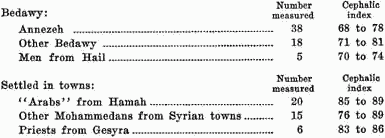
Remarkably parallel with the cephalic index is the form of the nose in both these groups. The Bedawy as a rule have short and fairly broad, the other "Arabs" have, with few exceptions, high and narrow noses, often of an aquiline form.
What we generally call a "Jewish type" is found very seldom among real Bedawy and very often among the "Arabs" in the towns, but it would be difficult to reduce this statement to a statistical form, as the conception of "Jewishness" is too uncertain and precarious.
We shall later on try to understand the historical connection between these two types, the Bedawy and the other "Arabs." For the moment, we must restrict ourselves to having shown the marked difference that separates them.
T. TURKS
It is customary in most European languages to call the Mohammedan subjects of the Padishah "Turks." But the word should never be used in this sense without inverted commas; it is more than ambiguous and easily leads to serious misunderstandings.
A Turkoman tribe, the Othmanli, commenced from 1289 to conquer a great part of what is now the Ottoman Empire. A good many of the former inhabitants were then forced to speak Turkish and to turn Mohammedans. It is easy to understand that the descendants of the conquerors and of the conquered renegades intermarried freely, and, as the number of the conquering troops was naturally very much smaller than that of the original population, the great bulk of the 10 or 15, or perhaps more, millions of so-called "Turks" has now the physical qualities, not of the conquering Othmanli, but of the old pre-Othmanic inhabitants.
So the anthropology of Turkey is, like that of Hungary, a typical example showing how language, religion, nationality, and race are quite distinct conceptions, and it is interesting to see how they arc again and again confounded by the general public and by the press.
In my paper on the Tahtadji I gave the indices of 187 "Turks" (Turkish-speaking Mohammedans) from Lycia, and was able to show that in the mountain villages, and in some swampy marshes not easy of access, people were generally short headed, and in the towns and on the coast long headed. Since then I have measured 569 more "Turks" from southern Asia Minor and northern Syria, so that I can now publish the cephalic indices of 756 adult men; they run from 69 to 96; if we count the indices 77 to 81 as mesaticephalic, 172 of these 756 men would be dolichocephalic, 151 mesaticephalic, and 433 brachycephalic, with a very pronounced maximum of 77 and 83 men respectively at indices 85 and 86.
These numbers speak for themselves, but it is perhaps useful to study first the corresponding figures for the two large remaining groups, the Greeks and the Armenians, and then to compare the results.
U. GREEKS
What has been said of the "Turks" is valid too in absolutely the same way for the "Greeks" of Anatolia and Syria. Some of them are certainly the direct descendants of old Ionians, Dorians, or Æolians, but the greater part are descended from other groups which spoke Greek and had accepted the orthodox religions.
I must here pass ever the interesting problem of the Dorian and Ionian wandering and must restrict myself to some measurements taken on a series of 179 adult men calling themselves Greek and belonging to the
orthodox church. I published this series in 1890, in my paper on the Tahtadji, and reprint here a graphic table (fig. 1) showing the frequency of the cephalic indices. It is very striking to see how the curve shows a maximum of 22 men with an index of 75, and a second maximum of 18 men with an index of 88.
Seventy-nine out of the 179 men are dolicho-, 84 are brachy-, and only 16 are mesaticephalic. If we reckon the arithmetic mean for the whole series, we get an average index of about 80, closely conforming to Weis-bach’s 95 skulls of Asiatic and European Greeks with an average index of 81.2, and with the series of Klon Stephanos, who found 80.8 for the Greeks in Europe and 80.7 for the Asiatic Greeks.
It is easily understood how dangerous and mystifying such an average index may be, if the material is composed of individuals from at least two different groups, as it manifestly is.
I am in possession of 93 skulls from a modern Greek cemetery in Adalia; they show about the same distribution of indices.
Long before the rediscovery of Mendel and his laws I tried to study the heredity of the cephalic index in the Greek families of Adalia. Here, in the old capital of Pamphylia, there is a large Greek colony, and as I had by good chance been able to give medical help to some of the influential members, I was permitted to measure parents, children and other relations in 67 families. The results were striking. I published a short abstract of them in 1889, in the Reisen in Lykien, and in 1890 in my paper on the Tahtadji.
There was a family A; the father had an index of 87, the mother of 73; of the two sons, the elder had an index of 70, the younger 87. In another family, B, the brother of the dead father had an index of 70, the mother 86, a son 82, a daughter 75. In a third family, C, both parents were brachycephalic, with indices of 85 and 86. Of their five children, only the youngest daughter was short headed, with an index of 86, and four elder brothers had long heads with 72, 73, 75, and 73, respectively; 74 was the index of a brother of the mother.
If I now study these 67 families in the light of Mendelian researches, it seems as if neither brachy- nor dolichocephaly were dominant or recessive; they seem to be transmitted now with equal frequency, and this has probably been the case for more than 2,000 years. At least, that is the age of the Greek colony of Adalia and for 60 or 70 generations short and long headed "Greeks" have been freely intermarrying. The result was, in many cases, not a mixture, as if we would mix red and white wine, but it was often a manifest reversion to the original types. I called this process "Entmischung"4 but one might perhaps just as well say "Spaltung"5 or "reversion" or "restitution."
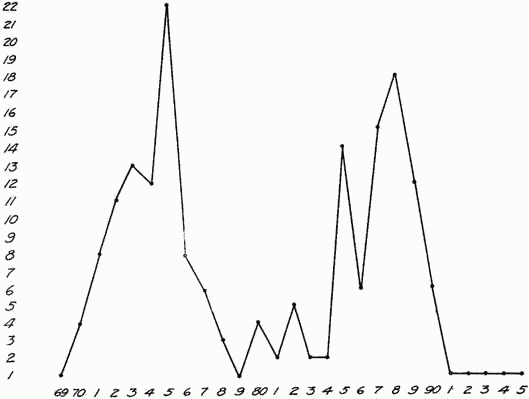 Fig. 1. Frequency of cephalic indices in a series of 179 adult male Greeks.
Fig. 1. Frequency of cephalic indices in a series of 179 adult male Greeks.
In this way good old types, once fixed by long inbreeding, do not necessarily get lost by intermarriage, but often return with astonishing energy.
The short heads of the Asiatic "Greeks" certainly correspond to the short heads of the "Turks" and of all the Moslem Sectaries described
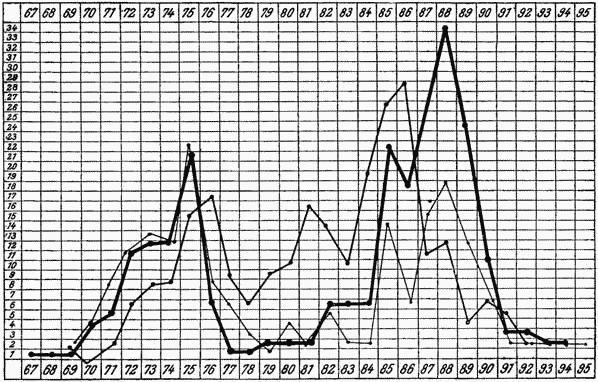 Fig. 2. Frequency of cephalic indices: 179 Greeks (light line); 756 Turks, reduced to one-third (medium line); 1222 Jews, reduced to one-fifth (heavy line).
Fig. 2. Frequency of cephalic indices: 179 Greeks (light line); 756 Turks, reduced to one-third (medium line); 1222 Jews, reduced to one-fifth (heavy line).
at length in this paper (fig. 2). We shall soon learn to know their real origin. The long heads probably do not belong to one uniform type; some of them are nearly as high as good Anglo-Saxon heads, and can perhaps be compared with the heads of Kurds; other long heads of Greeks are low, like the heads of Bedawy, and I am inclined to regard them as Semitic. They are, indeed, chiefly found on the sites of old Semitic colonies. In some of these places, as in Adalia, the women wear their hair in many thin plaits, like the old Assyrians, and they are famous for their "Semitic" appearance.
As in ancient Greece a great number of individuals seem to have been fair, with blue eyes, I took great care to state whether this were the case with the modern "Greeks" in Asia. I have notes for 580 adults, males and females. In this number there were 8 with blue, and 29 with gray or greenish, eyes; all the rest had brown eyes. There was not one single case of really light-colored hair, but in nearly all the cases of lighter eyes the hair also was less dark than the other Greeks. . . .
V. ARMENIANS
Whilst "Turks" and "Greeks" have been proved to be composed of at least two quite distinct somatic elements, the third of the three great ethnic groups, which form the bulk of the inhabitants of Asia Minor, the Armenians, is comparatively homogeneous.
Of course they also have incorporated in themselves various alien elements, and I know Armenians from southern Persia who look like Biloch or Dravidians, but as a rule the great mass of the Armenians forms not only a religious, but also a somatic unity.
Particularly in northern Syria there are places where Armenians resemble one another like eggs. Religious seclusion and, in many cases, life in remote mountain villages, have both contributed to prevent intermarriage with strangers, and thus we may assume from the beginning that they represent an old type.
More frequently than any other group in western Asia they show the "planoccipital" form of the profile curve, great brachycephaly with extreme height of the skull and a particularly narrow and high nose. . . .
SUMMARY
If we now sum up the results of our researches and try to review them in regard to the origin of the different ethnic groups of western Asia, we need not linger over the Negroes, the Circassians, the Albanians, the Bulgarians, the Bosnians, the Franks, and the Levantines. Their origin lies outside the scope of this paper. The same is true of the Gypsies and their kin, but it must be stated that perhaps one of the nomadic tribes in Asia Minor, the Yuruks, is in some way or other related with them.
Of far greater importance are the Kurds. From the great frequency of fair individuals among them, it is evident that their home must be in the north, and it is probable from their Aryan language that they are in some way connected with the Mitanni, who had Aryan divinities about 1280 B.C.
I am well aware that at present there is no real proof or decisive evidence for this statement, but, by way of a working hypothesis, I might be allowed to suggest that the Kurds, the Amorites of the Bible, the Mitanni of the Boghaz-köi tablets and the Tamehu of the old Egyptian texts are, if not identical, at least somehow related to one another. About 1500 B.C., or earlier, there seems to have begun a migration of northern men to Asia Minor, Syria, Persia, Egypt, and India. Indeed, we can now connect even Further India with the Mitanni of Central Asia Minor. On the tablets of Boghaz-köi the king of Mitanni not only calls himself and his people "harri" but he speaks of his noblemen as "mari," and Hugo Winckler and F. C. Andreas remind us of the word "marya" for "young man" or "hero" in the Vedic texts. So we find the same Aryan nobles in Mitanni about 1280 B.C., and very much later also in India.
If really, as it seems, the old texts state that the Amorites and the Tamehu were fair, we should thus get a historic explanation of the great number of xanthochroic people we find down to our time everywhere in Asia Minor and in Syria, and among the modern Jews.
Resuming now the thread of this paper, we have a great number of different "Moslem" Sectaries spread over a vast part of western Asia under different names, as Tahtadji, Allevi, Ali-Ullahîya, Ansarîyeh, Fellah, Kyzylbash, Yezidi, and Bektash, speaking the different languages of their orthodox neighbors, Turkish, Arabic, and Kurdish, but still absolutely homogeneous as to their somatic characteristics. And to this self-same group belong also the Druses and the Maronites. They also have the enormously high and short "planoccipital" heads and the narrow and high noses we find with the Sectaries.
Now this same hypsicephalic6 element with the high aquiline noses, which forms the entire stock of all these Sectaries, we find again in Persia, and in a high percentage among the Turks and the Greeks, and in a still higher among the Armenians—everywhere under circumstances that would make it appear to be old and aboriginal, whilst the dolicho-cephals seem to represent later immigrations.
This theory, based entirely on anthropometric research, is confirmed by historic considerations and by the results of modern excavations. We now know that about 1280 B.C., when Khattusil made his peace with Rameses II, there existed a large empire, not much smaller than Germany,
reaching from the Ægean Sea to Mesopotamia and from Kadesh on the Orontes to the Black Sea. We do not know at present it this Hittite Empire ever had a really homogeneous population, but we have a good many Hittite reliefs, and all these, without one single exception, show us the high and short heads or the characteristic noses of our modern brachycephalic groups.
When I first upheld in 1892, in my paper on the anthropological position of the Jews, the homogeneous character of these groups, I called them "Armenoids." But there can be no doubt that they are all descended from tribes belonging to the great Hittite Empire. So it is the type of the Hittites that has been preserved in all these groups for more than 3,000 years, and this is certainly a Jewish type, and corresponds with the old Jewish ideal of beauty as we read in the Song of Songs, vii, 4: "Thine eyes are as the pools in Heshbon, by the gate of Bath-rabbim, thy nose is like the tower of Lebanon, which looketh toward Damascus."
But this Jewish type is not Semitic and is rarely found among the only real Semites, the Bedawy. The Hittite inscriptions have not yet been read, but our orientalists are unanimous in assuming that there is not the slightest doubt that the Hittite language was not Semitic. These non-Semitic aborigines had their own language, their own writing, and their own religion. Semitic influence is completely absent in the earlier times and is perceptible only later on at different times in the different territories—first in Babylonia, then in Palestine, where Abraham is the eponymous hero of a Semitic invasion, and still later in Northern Syria. . . .
For the present population of northern Syria, as well as of all western Asia, our anthropometric tables show evidence that this old type is still extant in a high percentage among the actual inhabitants.
Only as to the primordial home of the Hittites, or however else we may term all these hypsi- and brachycephalic people with the high and narrow nose, is there some difficulty. The "Alpine race" of central Europe is certainly somehow related to or connected with them and a priori it is not easy to determine if the Hittites came from central Europe or if the "Alpine race" came from western Asia. I do not know if the first possibility has many champions left now. If so, they might certainly lay stress on the fact that the modern Armenians and the modern Persians, both typical "Hittites," are now speaking Aryan languages, but we know how often ethnic groups change their language entirely without losing their somatic type, and we can in this special case well imagine that early precursors of the xanthochroic Kurds and their relations may have brought their Aryan language to the Old Armenians and Persians without being able to impress their somatic type upon them.
We should not forget, too, that Europe is only a small peninsular annex to Asia, and that there are infinitely more typical "Hittites" in western
Asia than there are in Europe. It seems surer, therefore, to locate the cradle of the Hittites in Asia, where we find extreme brachycephals as far to the east as Burma and Siam and the Malay Archipelago.
We could then also understand how the essential somatic difference between the Hittites and the other brachycephalic Asiatics—their high and narrow nose—originated as a merely accidental mutation and was then locally fixed, either by a certain tendency of taste and fashion or by long, perhaps millennial, inbreeding. The "Hittite nose" has finally become a dominant characteristic in the Mendelian sense, and we see it, not only in the actual geographical province of the Alpine race, but often enough also here in England. Certainly, similar noses may originate everywhere, quite independently of the Hittites, by mere mutation, but it seems safer to explain by atavism and by Asiatic or Alpine origin noses like those of the late Cardinal Newman, Ralph Waldo Emerson, or Charles Kingsley.
So, to sum up, we see how all western Asia was originally inhabited by a homogeneous, melanochroic race, with extreme hypsi-brachycephaly and with a "Hittite" nose. About 4,000 B.C. began a Semitic invasion from the southeast, probably from Arabia, by people looking like modern Bedawy. Two thousand years later commenced a second invasion, this time from the northwest, by xanthochroous and long-headed tribes like the modern Kurds, half savage, and in some way or other, perhaps, connected with the historic Harri, Amorites, Tamehu, and Galatians.
The modern "Turks," Greeks, and Jews are, all three, equally composed of these three elements, the Hittite, the Semitic, and the xanthch-roous Nordic. Not so the Armenians and the Persians. They, and still more the Druses, Maronites, and the smaller sectarian groups of Syria and Asia Minor, represent the old Hittite element, and are little, or not at all, influenced by the somatic characters of alien invaders.
Combinations of philology With anthropology have in former times, especially through Friedrich Müller and his school, often led to serious mistakes. One spoke of Aryan races instead of people with Aryan languages, and one went so far as to speak of Aryan skulls and of Aryan eyes, so that Max Müller formally protested against the intrusion of linguistics into ethnology, stating that one might just as well speak of a brachycephalic grammar as of an Aryan skull.
Still there is a solidarity between the historical sciences and natural history, and in proof of this solidarity I have ventured—in the spirit and in honor of Thomas Henry Huxley—to give argument and evidence.
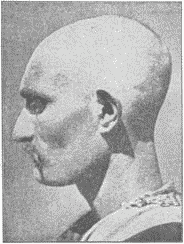 1. Kurd, Nimrud-Dagh.
1. Kurd, Nimrud-Dagh.
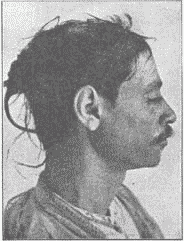 2. Bedouin from near Baghdad.
2. Bedouin from near Baghdad.
 3. Mohammedan, Girmeh.
3. Mohammedan, Girmeh.
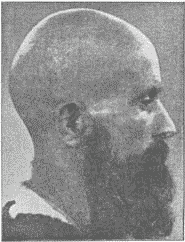 4. Mohammedan, Aghlasan.
4. Mohammedan, Aghlasan.
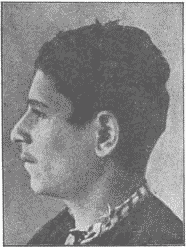 5. Greek, Levissi.
5. Greek, Levissi.
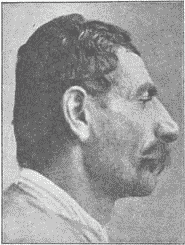 6. Armenian, Kessab, Djebel Akrah.
6. Armenian, Kessab, Djebel Akrah.
 7. Hittite Divinity, Sendjirli, Syria.
7. Hittite Divinity, Sendjirli, Syria.
1
2 Speak much like the Phrygians.
3 The accounts of the following nationalities have been omitted in the present extract: C, Albanians; D, Bulgarians; E, Bosnians; I, Turkomans; J, Yuruks; L, Tahtadji; M, Bektash; N, Ansariyeh; O, Kyzylbash; P, Druses; Q, Maronites.
4 "Unmixing."
5 "Splitting."
6 High-headed.